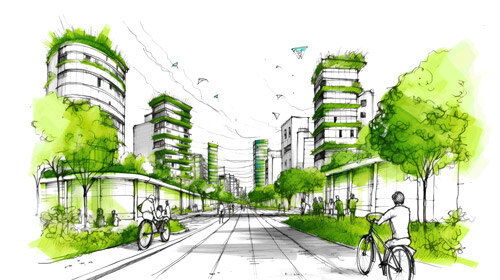The framework sets out the areas to be targeted including reducing car traffic by reworking around 3.5 kilometres of the Queensway motorway and the redevelopment of Snow Hill station, creating a transport hub to rival New Street station and a growth zone for further investment and development.
Underpinning all of this is the Transport Plan which aims to not only increase connections to HS2, but also expand public transport options and create sustainable walkways
At the recent UKREIIF event in Leeds, Cllr Ian Ward, outlined some of the inspiration for the future of Birmingham stating that they had taken on board the successful work done in some European destinations such as Vienna and Copenhagen in providing greener, cleaner spaces for their inhabitants.
Copenhagen has been lauded for its approach to public transport, encouraging its use by adding 17 new Metro stations, running a 24hr service with reduced times between trains.
In addition to this, Copenhagen now ranks as the world’s best capital city for cycling. Indeed, half of Copenhagen’s residents choose to cycle as part of their daily commute. This affirmative urban planning approach has persuaded residents away from their cars, therefore reducing congestion and pollution.
Birmingham is now looking to emulate Copenhagen’s blueprint, by creating an infrastructure that reduces car reliance, supports pedestrians, and encourages more cycling by increasing the networks available to cyclists. This approach is to dovetail with their commitment to improve the public transport offerings.
The ambition of Birmingham stealing the crown from Copenhagen by becoming Europe’s most cycle friendly city.
Similarly, Birmingham looked to Vienna in terms of green space. The Austrian capital has undergone a program of developing numerous parks, gardens and recreational areas, with green spaces now covering nearly half of the city. In addition, circa 15% of the city is used for agricultural purposes. This approach has clearly enhanced their residents’ quality of life with over 40% of Vienna’s residents walking as part of their daily commute.
In order for Birmingham to achieve this dramatic change by 2040 there will need to be a huge amount of cooperation between public and private sectors and at the heart of this is always the age-old question, who will plug the financial gaps that will inevitably appear during the process?

